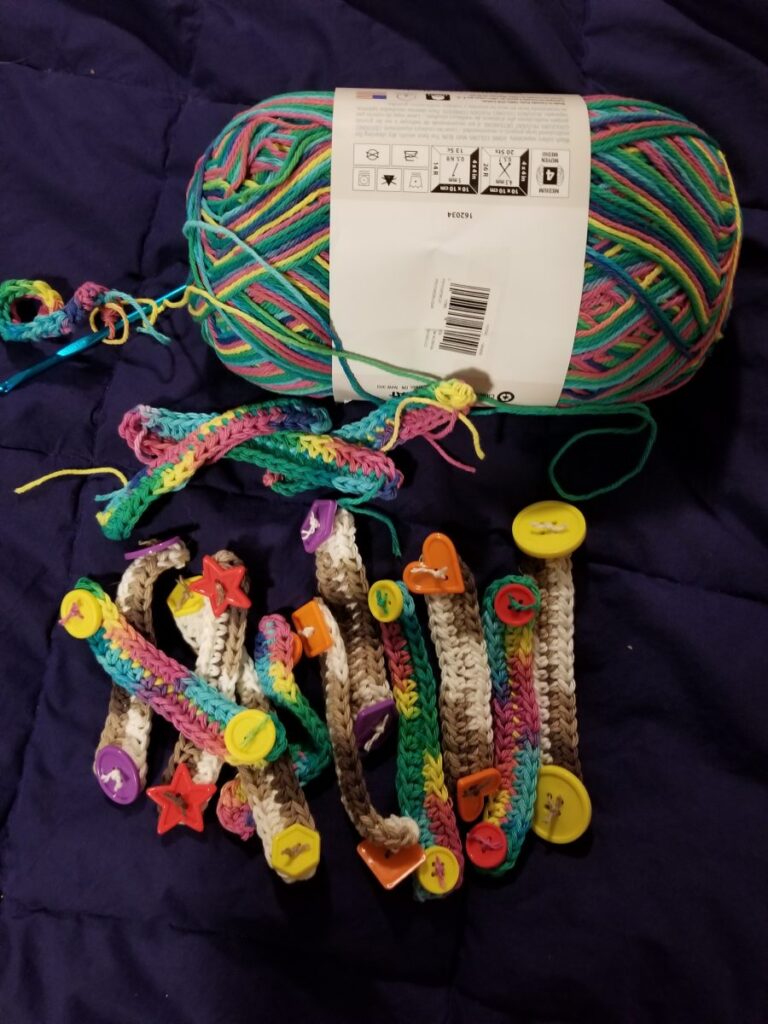When Heather Hyslop started looking for masks for her son during the COVID-19 pandemic, she knew it wasn’t going to be easy. Four-year-old Bowie was born with bilateral microtia atresia, a condition that affects development of the ears on both sides of the head. Standard surgical masks with ear loops don’t work for him.
Hyslop, the Team Rubicon Greater Houston associate of operations, reached out to another local Greyshirt, Cindi Barrett, for help. Barrett is TR’s Greater Houston logistics leader, and the two had known each other for several years. “I knew she had started sewing masks for COVID-19 support as a Neighbors Helping Neighbors activity,” says Hyslop.
Barrett and a few other South Central Territory Greyshirt sewers (including Teena Bladyes, Beth Dumont, Jennifer Nieder and Sylvia Ehret) had been making masks for organizations across the country. They’d already supplied a hospice facility in Missouri and a home health agency in North Carolina—as well as several fellow Greyshirts and neighbors.

Bowie in his special mask.
Barrett embraced the challenge. She knew she’d need to modify one of their usual designs to accommodate Bowie’s needs. “I would have to come up with some other way of securing the mask on a very active four-year-old,” she says. “I tried three different ideas and sewed samples to send to Heather to try on Bowie. Two of the samples used ribbon to tie the mask on; one sample used elastic cord, similar to how elastic is used on Halloween masks.”
Barrett guessed that the elastic version would be the most secure of the three. “Keeping face masks on any child is going to be a challenge as we move forward with COVID-19,” she points out. “Just like they don’t want to wear hats and mittens in the winter, they’re not going to want to wear face masks. The challenge is making the masks harder for them to get off but also comfortable and even fun.”
“He doesn’t like to leave it on for long—no one likes to wear masks,” says Hyslop. But she’s glad to have something that works when they do need to leave the house.
For her part, Barrett isn’t done tinkering with her creation. After Bowie tested the first samples, she sent over another version, which featured a fabric band with buttons sewn on either side to act as ears and secure elastic ear loops. She’s also just shipped Bowie summer versions of the masks, which are made of cotton, rather than cotton and flannel, the latter having proved too heavy and hot for Texas summers.
For Barrett, creative problem-solving is a family tradition. Her grandmother survived polio that left her with differently sized feet. “She spent her life buying two pairs of shoes in two sizes in order to have shoes that matched and dealt with her challenge.”
To anyone stymied by an unusual problem during these unprecedented times, Barrett has some words of encouragement: “Just put your thinking cap on and try different ways to accommodate the need,” she says. “It can be done; you just have to think about it and be willing to make some samples.” Team Rubicon recently published some tips on how to make masks.
Mask Making Makes for Small Comforts for Healthcare Workers
Team Rubicon Montana State Ops Coordinator Anne Marie Scott used a thinking cap of her own to make life a little easier for a friend and fellow Greyshirt, Nick Ramsay, a nurse in Bozeman, Montana.
On Facebook, he’d reminded his fellow nurses that the elastic loops of their masks can chafe their ears, creating something similar to bedsores. Scott already had a solution. She’d previously seen a design online for a mask leash, a short length of knitted yarn with buttons on either end. The little leash hooks on both ear loops, securing the mask around the back of the head instead of around the ears. Scott, a crocheter, tapped into her community to translate the knitting pattern into a crochet pattern.

Nick Ramsay, a nurse in Bozeman, in his Greyshirt-designed mask
Scott is also a regional incident commander for Team Rubicon’s nationwide COVID-19 response, Operation Kick the King. She oversees efforts in Montana, North Dakota and South Dakota. In between overseeing those activities, which include meal delivery, logistic support at testing stations, and providing medical relief in places like the Navajo Nation, she whipped up 10 leashes in three sizes using cotton yarn leftover from another project.
“The design is easy to make,” she says. “It’s just like the bottom of a baby bootie, but a little longer.” She did hit one small snag: “I didn’t have many 3/4- to 1-inch buttons, so I cannibalized an ancient battle dress uniform top I’ve had in the basement since I retired from the U.S. Air Force in 2008,” she says.
The leashes have been a success. “We’ve been enjoying the relief they provide,” says Ramsay, “most of us have had some form of pressure wounds on our ears [from mask elastic].” Scott, who is also a novelist releasing no less than five books this year, is making more for her local hospital. And she’s happy to make some for the TR community, too: “Greyshirts can just send me an email and I’ll send them out!”

Scott’s extra cushy mask making supplies.



